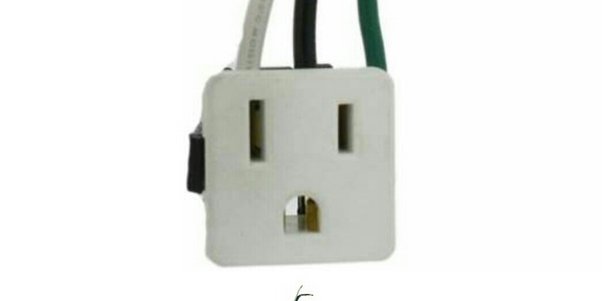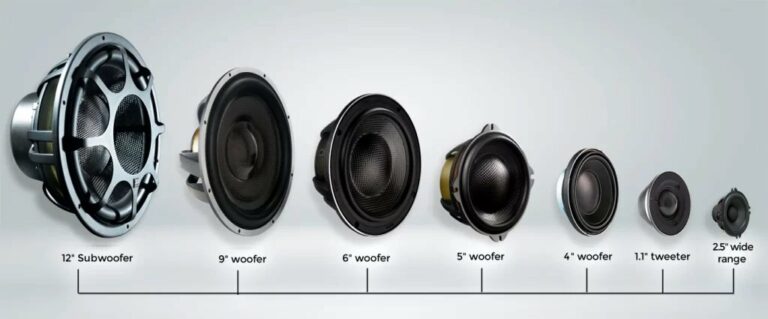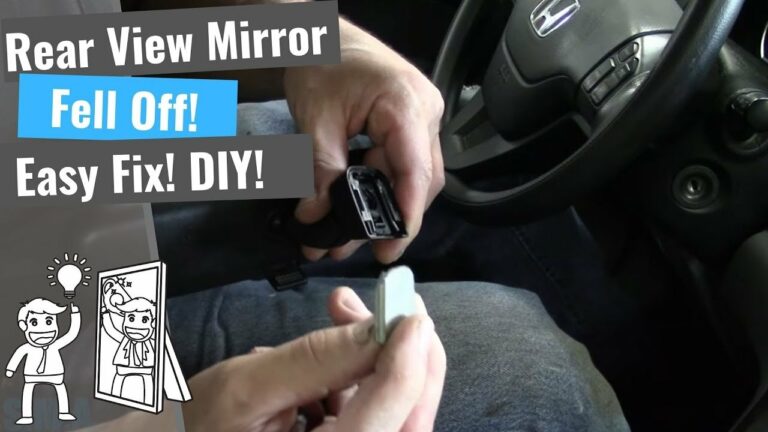Easy Steps For Adding An Outlet In Your Car
Looking to add an outlet to your car? You’re in luck! In this article, we’ll show you exactly how to get an outlet in your car, providing a simple and effective solution to meet your charging needs on the go. Whether you’re on a long road trip or simply need to power up your devices while commuting, having a car outlet can be incredibly convenient. So, let’s dive right in and learn how to get an outlet in your car effortlessly.
How to Get an Outlet in Your Car
Have you ever found yourself in a situation where you desperately needed to charge your electronic devices while on the road? Whether it’s a long road trip or a daily commute, having access to a power outlet in your car can be incredibly convenient. In this article, we will explore various options and methods to get an outlet in your car. We’ll dive into both DIY solutions and professional installations to help you find the perfect solution that suits your needs.
Section 1: Understanding the Need for a Car Outlet
Before we delve into the different ways to equip your car with a power outlet, let’s first understand why having one is essential. Here are a few reasons why you might want to consider getting an outlet in your car:
- Convenient charging on the go: Having a power outlet in your car allows you to charge your devices, such as smartphones, tablets, or laptops, while you’re driving or parked.
- Emergency situations: In case of emergencies, having a functional outlet can be a lifesaver. You can use it to power essential devices, such as a tire inflator or jump starter kit.
- Tailgating and outdoor activities: If you love tailgating or spending time outdoors, having a power outlet in your car can make your experience more enjoyable. You can power up speakers, mini-fridges, or camping gear.
Now that we understand the benefits, let’s explore the different options available to get an outlet in your car.
Section 2: Portable Power Inverters
One of the most popular and accessible ways to get an outlet in your car is by using a portable power inverter. A power inverter converts your car’s DC power into AC power, allowing you to plug in and charge standard household devices. Here’s how it works:
- Selecting the right power inverter: Power inverters come in various wattage ratings, so it’s crucial to choose one that suits your needs. Consider the devices you intend to power and their power consumption to determine the appropriate wattage.
- Connection and installation: Portable power inverters typically connect to your car’s cigarette lighter or directly to the car battery. Follow the manufacturer’s instructions for a safe and secure connection.
- Using the outlet: Once connected, you can simply plug in your devices into the power inverter’s outlet, just like you would with a regular power outlet at home.
Portable power inverters offer a flexible and affordable solution, making them a popular choice among car owners. However, it’s essential to keep in mind their limitations, such as the maximum wattage capacity and potential drain on your car battery. Let’s explore other options for a more permanent solution.
Section 3: Professional Installation
If you’re looking for a more permanent and integrated solution, professional installation might be the way to go. Car accessory shops and automotive electricians can install dedicated power outlets directly into your vehicle. Here’s what you need to know:
- Choose the right type of outlet: There are several types of power outlets available, such as standard AC outlets, USB ports, or a combination of both. Consider your charging needs and preferences to select the right type.
- Location and placement: Decide where you want the outlet to be installed in your car. Common locations include the center console, dashboard, or backseat areas.
- Electrical wiring: Professional installers will handle all the electrical wiring required for the outlet. They will ensure a safe and secure connection to your car’s electrical system.
- Additional accessories: Along with the power outlet, you might also consider installing additional accessories like voltage meters, switch panels, or surge protectors to enhance functionality and safety.
Professional installation offers a seamless and integrated solution, ensuring a reliable power source in your car. However, it’s important to consider the cost and find a reputable installer with experience in automotive electrical work.
Section 4: DIY Solutions
If you have some technical knowledge and enjoy taking on DIY projects, you can explore various do-it-yourself solutions to get an outlet in your car. Here are a few options to consider:
Adapting Existing Outlets:
Some cars come with built-in power outlets, but they may not be easily accessible or lack the right connectors for your devices. In such cases, you can explore options to adapt and modify existing outlets. Here’s how:
- Find the existing outlets: Locate the existing power outlets in your car, which are typically located in the front console, rear seats, or trunk area.
- Adapters and converters: Use adapters or converters to match the outlet’s connectors with your devices. For example, if your outlet is a cigarette lighter socket, you might need a USB adapter to charge your phone.
- Extension cords: If the existing outlets aren’t conveniently placed, you can use extension cords to extend the reach of the outlet to a more accessible location.
Custom Installation:
For those with advanced technical skills, custom installation of a power outlet is an exciting option. This involves designing and fabricating a custom solution unique to your car. Here are the basic steps:
- Choose an outlet type: Select the type of outlet you want to install, such as a standard AC outlet or USB ports.
- Design the installation: Plan the placement and mounting of the outlet within your car. Consider factors like accessibility, aesthetics, and safety.
- Electrical connections: Follow proper electrical wiring techniques to connect the outlet to your car’s electrical system. Ensure proper grounding and safety measures.
- Testing and troubleshooting: Once the outlet is installed, thoroughly test it to ensure proper functionality and troubleshoot any issues.
DIY solutions offer a sense of satisfaction and customization, but they require a higher level of technical expertise and may void your car’s warranty. Proceed with caution if you choose to take on a DIY project.
Section 5: Power Source Alternatives
Apart from installing dedicated power outlets, there are alternative power source options worth exploring for charging your devices in the car. Let’s take a look at a few of them:
USB Car Chargers:
USB car chargers plug into your vehicle’s cigarette lighter or USB ports, providing a quick and easy charging solution for USB-powered devices. They are compact, portable, and widely available.
Power Banks:
Power banks are portable charging devices that store electrical energy and can be used to charge your devices on the go. While not specifically for your car, they offer convenience and versatility.
Solar Chargers:
Solar chargers utilize sunlight to generate power and charge your devices. They are particularly useful for outdoor activities and emergencies, as they harness renewable energy.
Section 6: Safety Considerations
When dealing with electrical modifications in your car, it’s crucial to prioritize safety. Here are some safety considerations to keep in mind:
- Ensure proper grounding: Properly ground all electrical connections to prevent electrical shocks or damage to your car’s electrical system.
- Avoid overloading circuits: Be mindful of the power limits of your car’s electrical system and the devices you’re connecting to prevent overloading and potential damage.
- Use quality components: Invest in high-quality power inverters, outlets, and accessories to ensure durability and minimize the risk of electrical issues.
- Regular inspections: Periodically inspect the outlets, wiring, and connections for any signs of damage or wear and tear. Replace or repair as necessary.
Section 7: Conclusion
In today’s technology-driven world, having an outlet in your car can greatly enhance your overall driving experience. Whether you opt for a portable power inverter, professional installation, or a DIY solution, there are plenty of options available to suit your needs and preferences. Evaluate your charging requirements, technical skills, and budget to determine the best approach for getting an outlet in your car. Remember to prioritize safety and enjoy the convenience of having a power source on the go.
Section 8: FAQ
To provide you with further clarity, we’ve compiled a list of frequently asked questions about getting an outlet in your car:
1. Is it safe to install a power outlet in my car?
2. Can I use a power inverter while the car is turned off?
3. How much does professional installation of a power outlet cost?
4. Can I install multiple power outlets in my car?
5. Can I charge high-powered devices like laptops or medical equipment?
6. Will installing a power outlet in my car void the warranty?
7. What is the difference between a power inverter and a power outlet?
8. Can I install a power outlet in an electric or hybrid vehicle?
9. Are there any restrictions or regulations regarding car power outlets?
10. Can I install a power outlet if I don’t have any technical knowledge?
We hope these answers address some of your concerns and help you make an informed decision about getting an outlet in your car.
How to Install an Electrical Outlet in ANY Car
Frequently Asked Questions
How can I get an outlet in my car?
To get an outlet in your car, there are a few options:
Can I install an outlet in my car by myself?
Yes, it is possible to install an outlet in your car by yourself, but it requires some electrical knowledge and skills. Before attempting to install an outlet, it is recommended to consult the car’s manual or seek professional assistance to ensure safety and proper installation.
What type of outlet can be installed in a car?
The most common type of outlet installed in cars is a 12-volt accessory outlet, also known as a cigarette lighter socket. This type of outlet can be used to power small electronic devices such as phone chargers, GPS units, and portable air compressors.
Where can I purchase a car outlet?
Car outlets can be purchased from automotive stores, electronics retailers, or online shopping platforms. It is important to ensure compatibility with your car’s electrical system and check customer reviews before making a purchase.
Do I need to modify my car’s electrical system to install an outlet?
In most cases, installing a 12-volt accessory outlet does not require major modifications to the car’s electrical system. However, it is recommended to consult the car’s manual or seek professional advice to understand any specific requirements or limitations for your vehicle.
How much does it cost to get an outlet installed in a car?
The cost of getting an outlet installed in a car can vary depending on various factors such as the type of outlet, labor charges (if seeking professional help), and any additional materials required. It is recommended to research prices and seek quotes from different sources to get an accurate estimate.
Can I use the car outlet when the engine is turned off?
Generally, car outlets can be used even when the engine is turned off, as they are designed to draw power from the car’s battery. However, it is important to be cautious and avoid draining the battery excessively to prevent any starting issues. It is recommended to refer to the car’s manual for specific guidelines on accessory usage when the engine is off.
Final Thoughts
To get an outlet in your car, follow these simple steps: First, determine the type and size of outlet you need based on your charging needs. Then, locate a suitable spot in your car to install the outlet, ensuring it is easily accessible and away from any potential hazards. Next, gather the necessary tools and materials, such as a power inverter, wiring, and connectors. Carefully install the outlet, following the manufacturer’s instructions and guidelines. Finally, test the outlet to ensure it is functioning properly. By following these steps, you can easily get an outlet in your car to conveniently power your devices while on the go.






